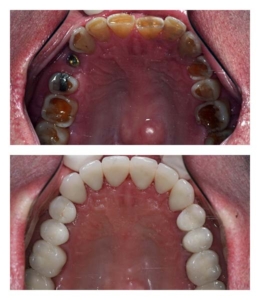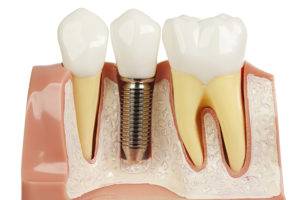The realm of dentistry has witnessed a remarkable transformation with the advent of dental implants, offering a lifelike and enduring solution for individuals grappling with tooth loss.

Among the multitude of factors contributing to the success of dental implant procedures, precise planning and meticulous diagnostics stand paramount. In this comprehensive exploration, we delve into the pivotal role of Cone Beam Computed Tomography (CBCT) imaging in dental implant planning.
As we navigate the intricate landscape of dental implantology, we will uncover how CBCT technology has revolutionized the way dentists approach implant procedures, offering a level of precision and accuracy hitherto unattainable.
Unveiling the Essence of CBCT Imaging
A Leap Beyond 2D Radiography: At its core, CBCT imaging is a sophisticated radiographic technology that transcends the limitations of traditional 2D dental X-rays. Instead of two-dimensional snapshots, CBCT scans provide a multifaceted, three-dimensional insight into the patient’s oral and maxillofacial region.
A Holistic View of Anatomy: Unlike their 2D counterparts, CBCT scans offer an all-encompassing view of the patient’s anatomy, leaving no stone unturned.
From the intricacies of bone structure to the meandering pathways of nerves, from the sinuous contours of sinus cavities to the alignment of adjacent teeth, CBCT imaging captures it all. This level of granularity is nothing short of invaluable when it comes to orchestrating the symphony of precise implant planning.
The Quintessential Role of CBCT Imaging
Assessing Bone Density and Quality: At the heart of dental implantology lies the pivotal question of whether the patient’s bone is amenable to implant placement. CBCT scans serve as the oracle, bestowing upon the clinician the ability to gauge bone density and thickness with unwavering accuracy. Armed with this information, the dentist can make informed decisions about implant suitability, size, and type.
Navigating the Anatomical Maze: CBCT imaging transcends the boundaries of bone assessment. It offers a comprehensive map of the surrounding anatomical structures, thereby mitigating potential complications during implant placement. Dentists can discern the precise locations of nerves, blood vessels, and sinus cavities, thus sidestepping the perilous pitfalls of nerve damage or sinus perforation.
Precision in Implant Placement
The Art of Exactitude: Arguably one of the most critical factors in the dental implant process is the precise placement of the implant within the bone. This is where CBCT imaging reigns supreme. Armed with 3D visuals, dentists can meticulously plan the exact location and depth of implant placement, ensuring the implant integrates seamlessly with the surrounding bone, guaranteeing stability and long-term success.
The Virtual Dress Rehearsal: Before the curtains rise on the actual implant surgery, CBCT technology offers the luxury of a virtual dress rehearsal. Through specialized software, dentists can simulate implant placement, meticulously evaluating its alignment with adjacent teeth and its aesthetic impact. This rehearsal not only reduces the margin for error but also enhances the predictability of outcomes.
The Rise of Customized Surgical Guides
An Era of Personalization: CBCT scans have paved the way for the creation of customized surgical guides. These guides, crafted with precision based on CBCT data, are the unsung heroes of implant placement. Whether 3D-printed or digitally designed, these guides align with the patient’s unique anatomy with unfaltering accuracy. During the actual surgery, they serve as navigational beacons, ensuring that the implant finds its rightful place, minimizing the prospect of errors.
Balancing the Scales of Radiation Exposure
Addressing Radiation Concerns: While CBCT imaging offers an unparalleled glimpse into the oral and maxillofacial realm, it is not without its caveats. One primary concern revolves around radiation exposure. CBCT scans, by their very nature, emit a higher dose of radiation compared to traditional dental X-rays. However, strides in technological advancement have led to lower radiation doses while preserving image quality. Additionally, dentists adhere to stringent guidelines, ensuring that radiation exposure is limited to the bare minimum required.
The Holistic Canvas of Treatment Planning
Beyond Implant Placement: CBCT imaging is not solely confined to implant placement; it plays a pivotal role in comprehensive treatment planning. Dentists employ these 3D visuals to assess the patient’s overall oral health, pre-empt potential complications, and chart a treatment trajectory that encompasses elements like bone grafting, sinus lift procedures, and orthodontic interventions.
Enhanced Patient Communication
The Power of Visuals: CBCT scans offer patients a visual representation of their oral anatomy that transcends words. Dentists employ these images as a means of effective communication, elucidating the nuances of the implant procedure. Patients, armed with this visual comprehension, become not just recipients but active participants in their treatment decisions, fostering a sense of empowerment and trust.

